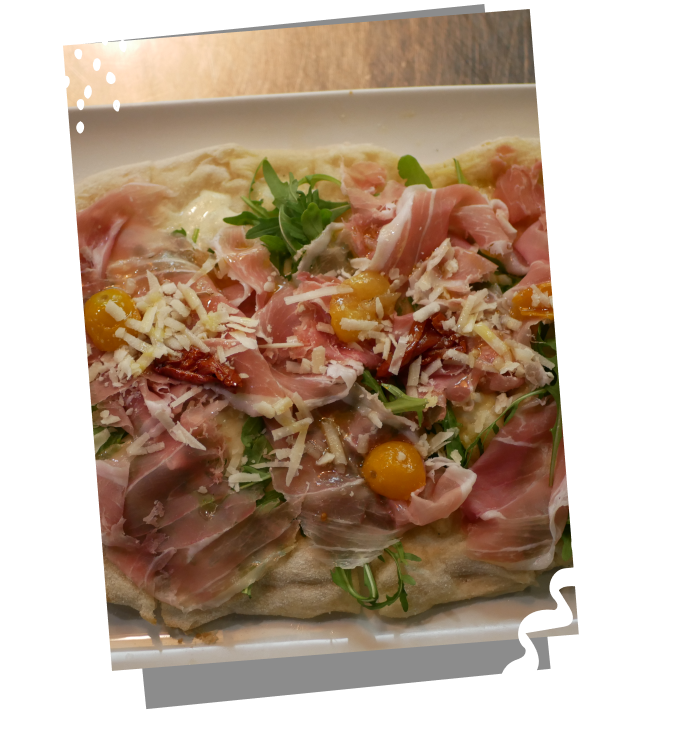And we always have dishes off the menu!
With which we give free rein to our imagination and in which we incorporate seasonal ingredients or those of the moment.
And we always have dishes off the menu!
With which we give free rein to our imagination and in which we incorporate seasonal ingredients or those of the moment.
“The principles of the Roman pinsa have ancient origins. Its original recipe related to focaccia, shape and size, dates back to Roman times. It was originally prepared by the peasants of Roman Lazio by mixing water, cereals, salt and aromatic herbs, obtaining a smooth and delicious mixture that was cooked on the grill.
The pinsa is handmade with high quality Italian raw materials and without preservatives, using a selection of non transgenic flours (wheat, soy and rice), extra virgin olive oil and dried mother yeast without adding animal fats.
The dough of the pinsa matures for 72 hours. The result is an incredibly light and crispy dough that contains less sodium, gluten and fewer calories, but retains its great taste. The high percentage of water used in the preparation of the dough together with the double cooking is another characteristic that differentiates the pinsa romana from the famous pizza, making it more digestive.
The pinsa romana is a relatively young product compared to the more famous “pizza”. It was born at the end of the nineties of the 20th century and takes up important characteristics of the focaccia with cereals used in ancient Rome, as well as in shape and size.
The term “pinsa” actually derives from the Latin “pinsere” which means elongated, oval-shaped; in Ostia Antica (the ancient port of Rome) it was not difficult to find bakers in the street who prepared these focaccias on the stone, as we do now. The flours used are naturally different thanks to the discovery of soy and the introduction of rice in the dough, which results in a dough that is more aerated and retains more water than 00 wheat flours.”

We will always keep alive the flame and excitement of the first times